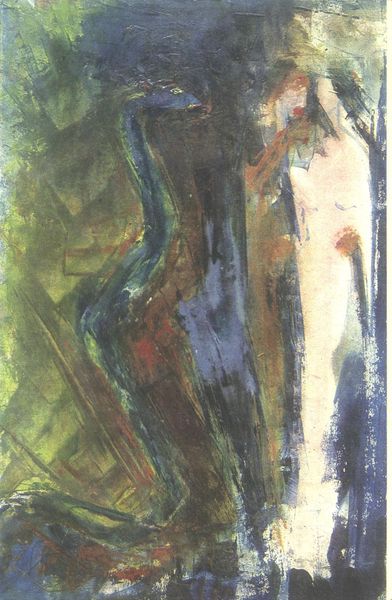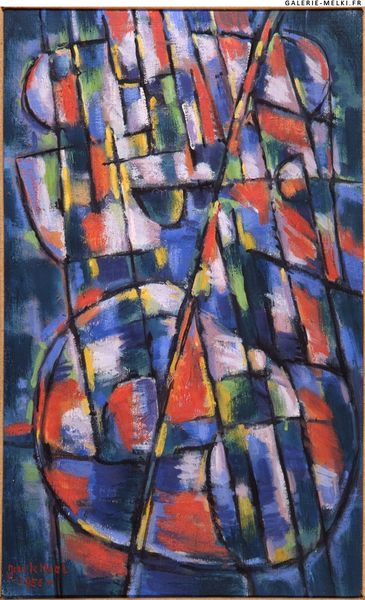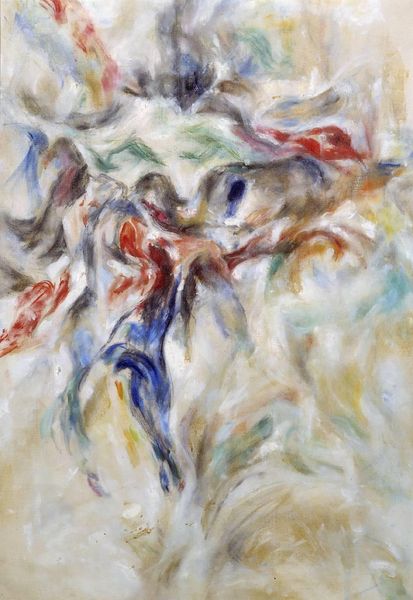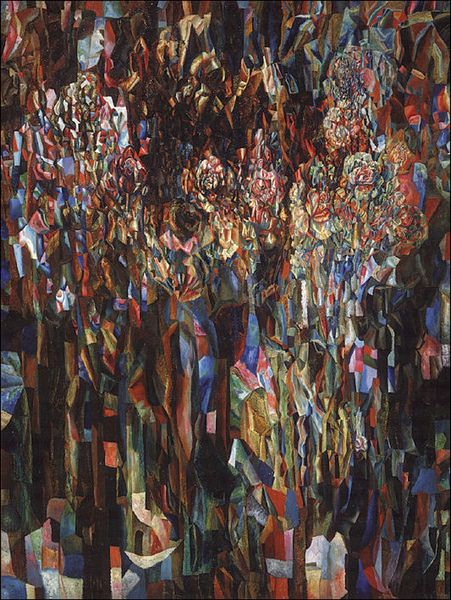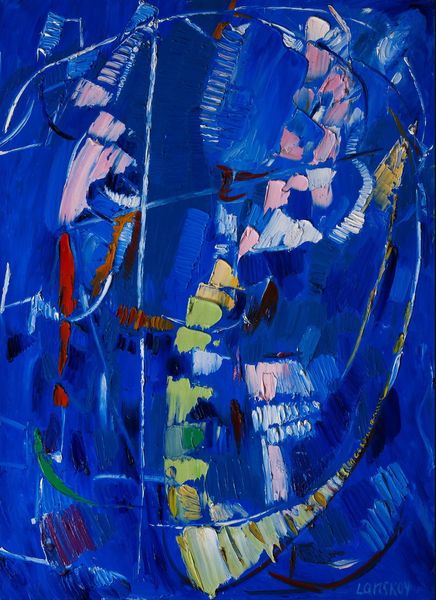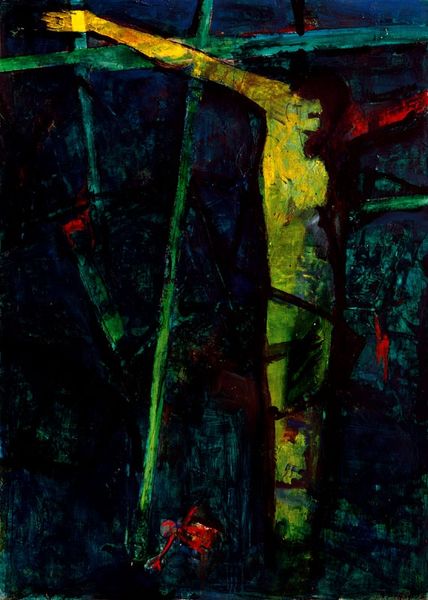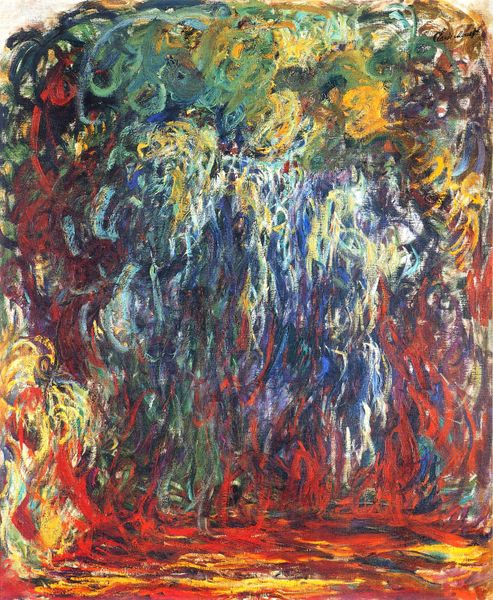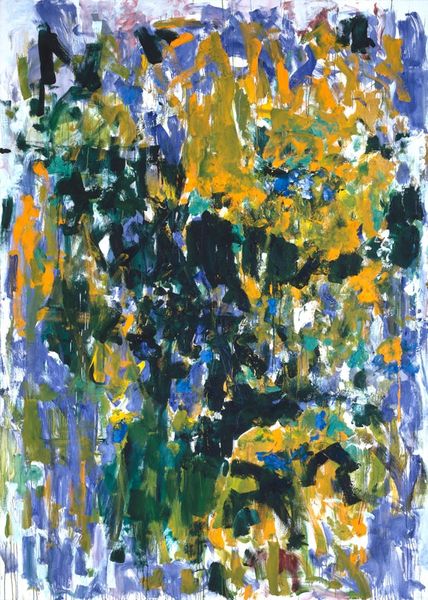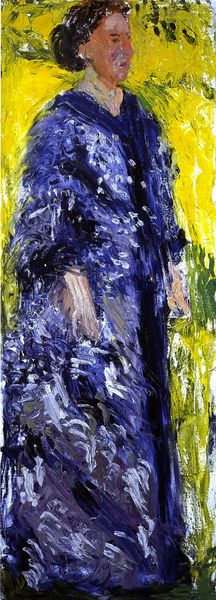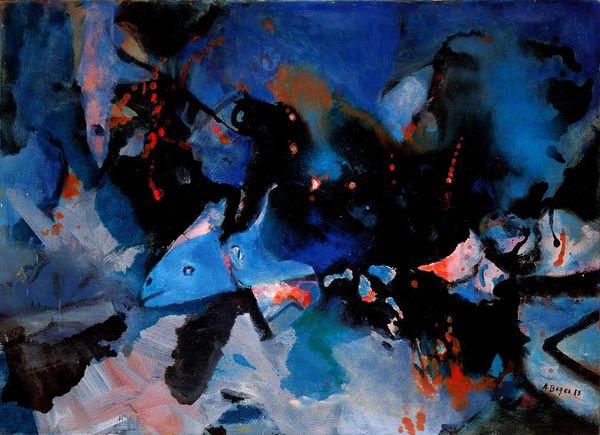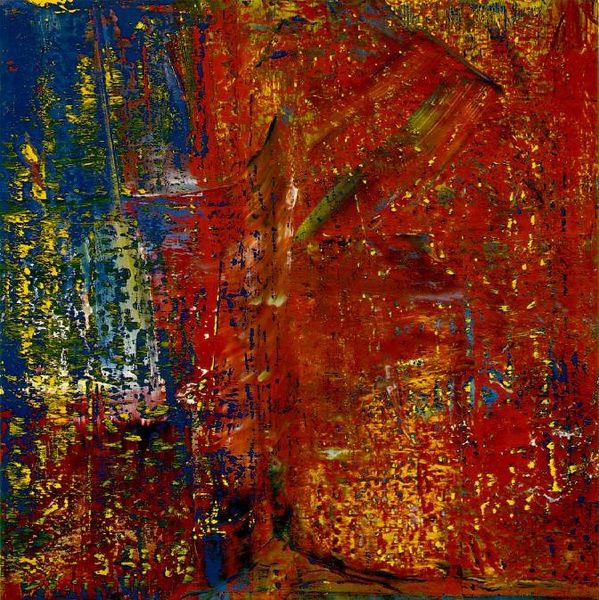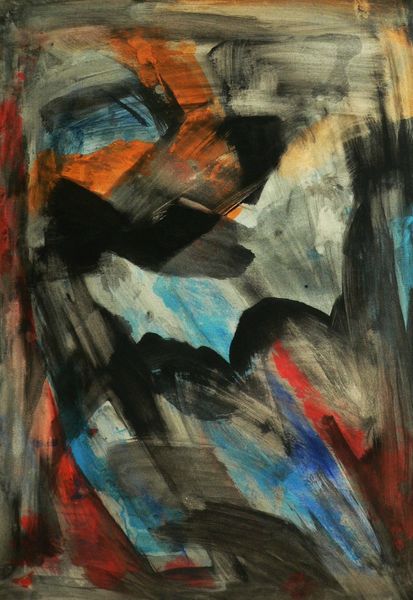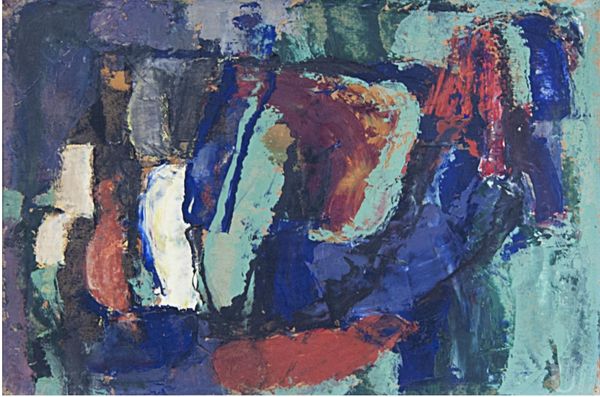
Copyright: Alfred Manessier,Fair Use
Curator: Alfred Manessier’s "Les Ténèbres," painted in 1962, is rendered in acrylic on canvas. Manessier was a key figure in Art Informel, a movement valuing process and gesture over formal structure. What’s your immediate take? Editor: My first impression is a shiver, like standing on the edge of a cold forest, looking into inky shadows. The touches of vibrant blue, orange, and pink almost feel desperate, little sparks against the overwhelming dark. Curator: Indeed. The "tenebres"—the darkness—is palpable. Looking closely, we can see the density of the acrylic paint application. Manessier employed dynamic, sweeping gestures with visible brushstrokes. The materiality itself speaks to the immediacy and expressive freedom that was so central to Art Informel. Editor: Right. I can almost see his arm moving. But it's not frantic. It's more like a controlled turbulence. Like he's trying to catch something elusive within the dark, pin it down with these jolts of color. Does the process convey some larger struggle or idea? Curator: Possibly. In its historical context, this was created shortly after WWII, in an era of reconstruction, trauma and the rise of mass production. Many artists grappled with representing the unspeakable through abstraction, using material and process as the ground for something new. Matter Painting offered a kind of truth that representational art couldn't reach. Editor: So the very act of painting, the struggle with the "stuff" of the world, becomes a way of understanding that world's own brokenness... It does have an intensity about it that's both beautiful and deeply unsettling. It is something else. Curator: And in Manessier’s hands, those contrasting elements—the darkness, the vivid colors—don’t cancel each other out, but instead create a space of tension and possibility. They demonstrate the ability of matter to signify beyond mere representation. Editor: Well, I find that particularly affecting. It’s a kind of stubborn hope within despair. I feel strangely uplifted despite the heavy title and sombre hues. Curator: It reveals how analyzing art from a materialist viewpoint reveals not just form, but the artistic labor behind each piece, and the social narratives interwoven within the making. Thank you. Editor: Indeed! Thank you for elucidating those interwoven social meanings. The painting becomes an entry point into the struggles of that moment, translated onto canvas, available to our experience.
Comments
No comments
Be the first to comment and join the conversation on the ultimate creative platform.
